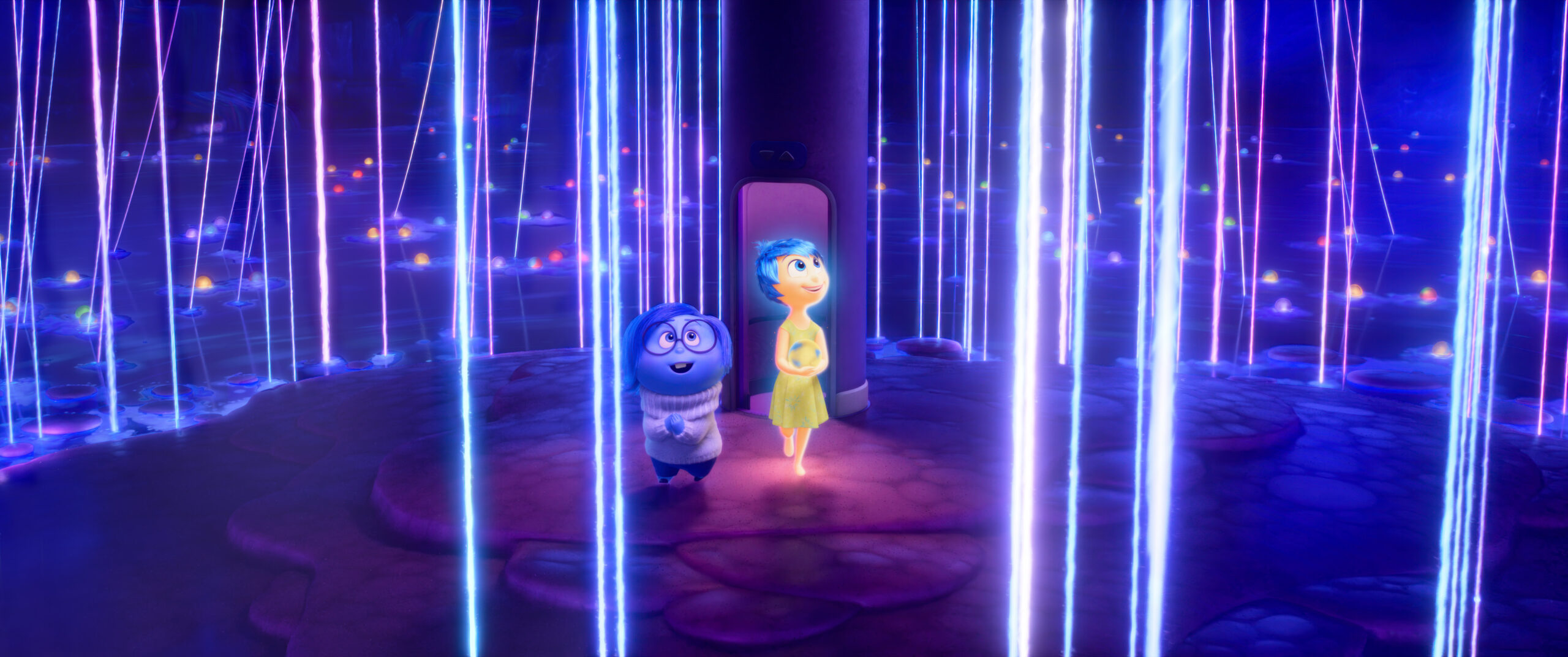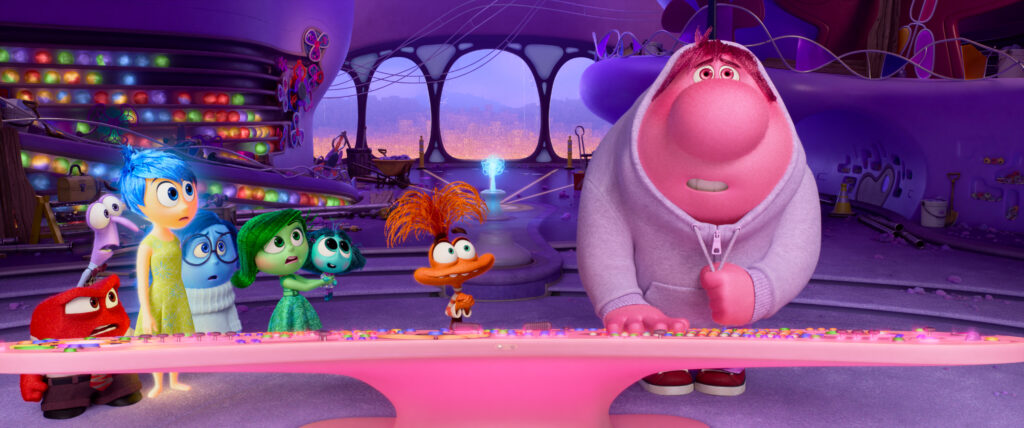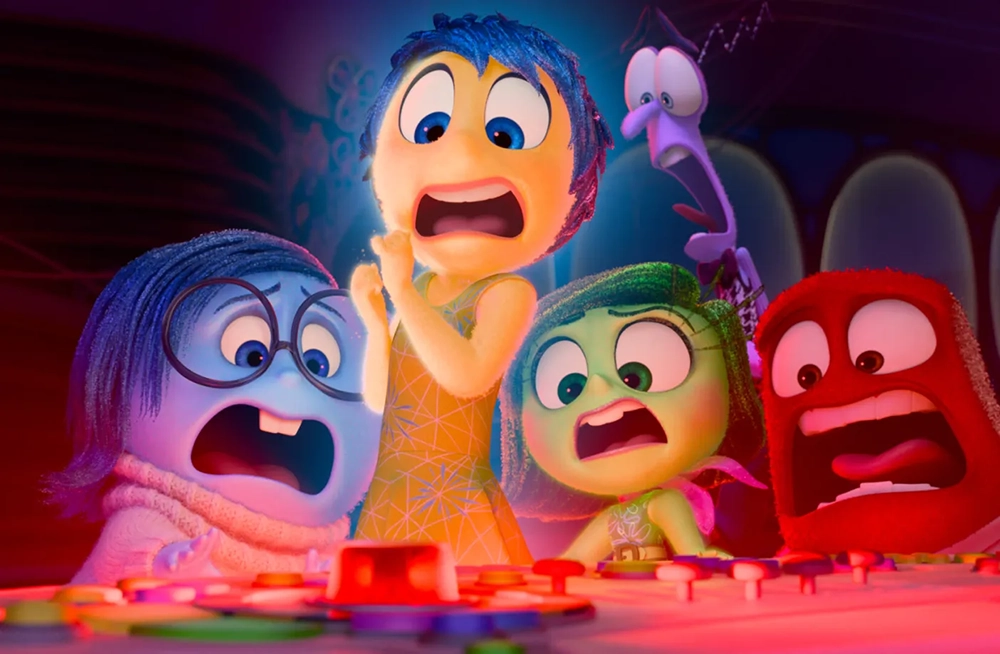“Inside Out” is known by many as one of the best films Pixar has to offer, not only in its modern, creaky filmography but its entire repertoire. And with due diligence. This venture into the mind of a young girl, with her emotions personified, had audiences worldwide relating. They were caring for this universal story about growing up and the pains that come along the way. Everybody could connect with the specificities of the story. Meanwhile, the young kids going through those changes saw the film as a guide to understanding what was coming. I may not think that it is the best Pixar film of all time as many suggest. Yet there’s a sense of respect on my part that comes from the film’s grounded depiction of the topic through this vivid and creative world.
A Sequel to the Universally Acclaimed 2015 Animated Film
You could see yourself in the main characters. The viewer reflects on the emotions’ conversations and links them with their own experiences. Pete Docter’s visionary scope and tactile touch made “Inside Out” come alive. It felt different from the other Pixar films yet contained the core ingredients that make it palpable for younger viewers. Instead, unfortunately, its sequel, “Inside Out 2” (Docter exiting the director’s chair for Kelsey Mann to step in), doesn’t garner that same tangibility and banks on the original’s charm and concept to pull the viewer’s emotional heartstrings, albeit forcefully and without earned tenderness. Packed with an A-list voice cast, most of which have quick-witted and well-timed line delivery, the film fails to capture what made the 2015 animated hit so adored.
“Inside Out 2” follows Riley (Kensington Tallman) on a new stage in her life. She is a great hockey player who dreams of being selected to the high school team, a grade-A student, and, most importantly, a good person. When she turns thirteen, puberty hits her with many changes and even more complex emotions. Joy (Amy Poehler) and her usual suspects – Anger (Lewis Black), Disgust (Liza Lapira), Fear (Tony Hale), and Sadness (Phyllis Smith) – seem to be running her life to a smooth sailing. Riley and her best friends, Grace (Grace Lu) and Bree (Sumayyah Nuriddin-Green), have gotten the opportunity of their lives: attending Coach Howard’s (Yvette Nicole Brown) summer camp that comes with the potential of getting into their dream team. However, when the day comes, everything alters.
The puberty demotion crew has remodeled the control system of Joy and the other emotions used to guide Riley. Just a light tap of a button causes an overreaction on Riley’s part. When they try to help her like before, things go sideways. Everything comes out rather rampant. This is shown through the various ways teenagers distance themselves through these significant changes: annoyances, sarcasm, constantly questioning themselves (and others), and forcefully trying to fit in, among others. You immediately recognize these reactions. Younger viewers may get their first hints at this. Meanwhile, older ones will reflect on these challenging times of confusion and uncertainty. And with the classic Pixar look and storytelling mechanisms make “Inside Out 2” feel more palpable and degenerative to a broader audience, for better or worse.
With New Emotions Comes New Challengers, Both Literally and Figuratively

This paves the way for emotions like Anxiety (Maya Hawke), Ennui (Adèle Exarchopoulos), Envy (Ayo Edebiri), and Embarrassment (Paul Walter Hauser) to take over and cause a complete shift in control – sending Joy and crew to the back of the mind, the void filled with memories left behind, moments you would like to forget, and thoughts bottled up. Riley’s journey is rocky, much like the film’s structure. But it is one she must go through to grow as a person. Joy realizes how time causes wounds and slowly heals them as you go through the various experiences life throws at you.
The primary purpose of “Inside Out 2” is not only to provide teenagers feel seen and understood, just like the original did back in 2015 with depression, but also a guide for parents – who have gone through these experiences and changes yet don’t seem to help their kids through the process. In aging, some parents neglect their children’s feelings and don’t acknowledge these identifiable, shared processes. In some instances, children can’t control themselves amidst these changes. It is hard for them to deal with them alone or even speak about them appropriately to other people. So, cinema, as the perfect encompassing of art and science, provides them and their parents with ways to help them uncover what life throws at them, whether it is full of joy or melancholy.
I found the double-sided beauty in these two “Inside Out” pictures. Pixar and director Kelsey Mann don’t sugarcoat the process entirely, occasionally relying on the rawness of this psychological breakdown. The company’s unnecessary reliance on oversimplifying things is in full force. However, this empathy resounds across the film’s atmosphere, provoking thought and reflection. Kelsey Mann does a great job depicting this initial sway of emotions with plenty of care and universal relatability. The way the latter is handled makes “Inside Out 2” feel less genuine and more so calculated. As mentioned, the film covers much more complex grounds than the original.
Pixar’s Emotional Puppeteering

New emotions are being personified, and Kelsey Mann tries his best to tie everything up in a nice, charming bow. Coincidentally, it feels less-layered and simplistic due to its unraveling on the emotional collision course. It threads the same waters as it did before. Riley explores an array of mood swings as the emotions again lose control of the panel. And that isn’t the problem per se. Joy and company must go through some “repeated” actions to reflect on the passing of time and the rapid-fire shifts puberty causes. It makes a lot of sense thematically. However, structurally it falters because it leaves many elements behind or short-sighted. The project does not want to embrace the dark nature of today’s growing youth.
You can see this the most in the second and third acts. It is plagued by a certain artificiality and forcefully emotional void that separates the concept from the ground and tactile to calculated and overbearing. Pixar has been known for puppeteering its films to cause an emotional reaction from the audience. But that doesn’t make it manipulative, as the screenplay in their projects is heartfelt and palpable. The issue comes when you see the strings moving the figures in place and the hand handling them. In the case of “Inside Out 2,” they are very evident. And there is no need for such manipulation. The story is already very relatable and recognizable to all eyes that will glance upon it during its first week of release or in the foreseeable future.

“Inside Out 2” hit theaters worldwide theaters on June 14th, 2024.


